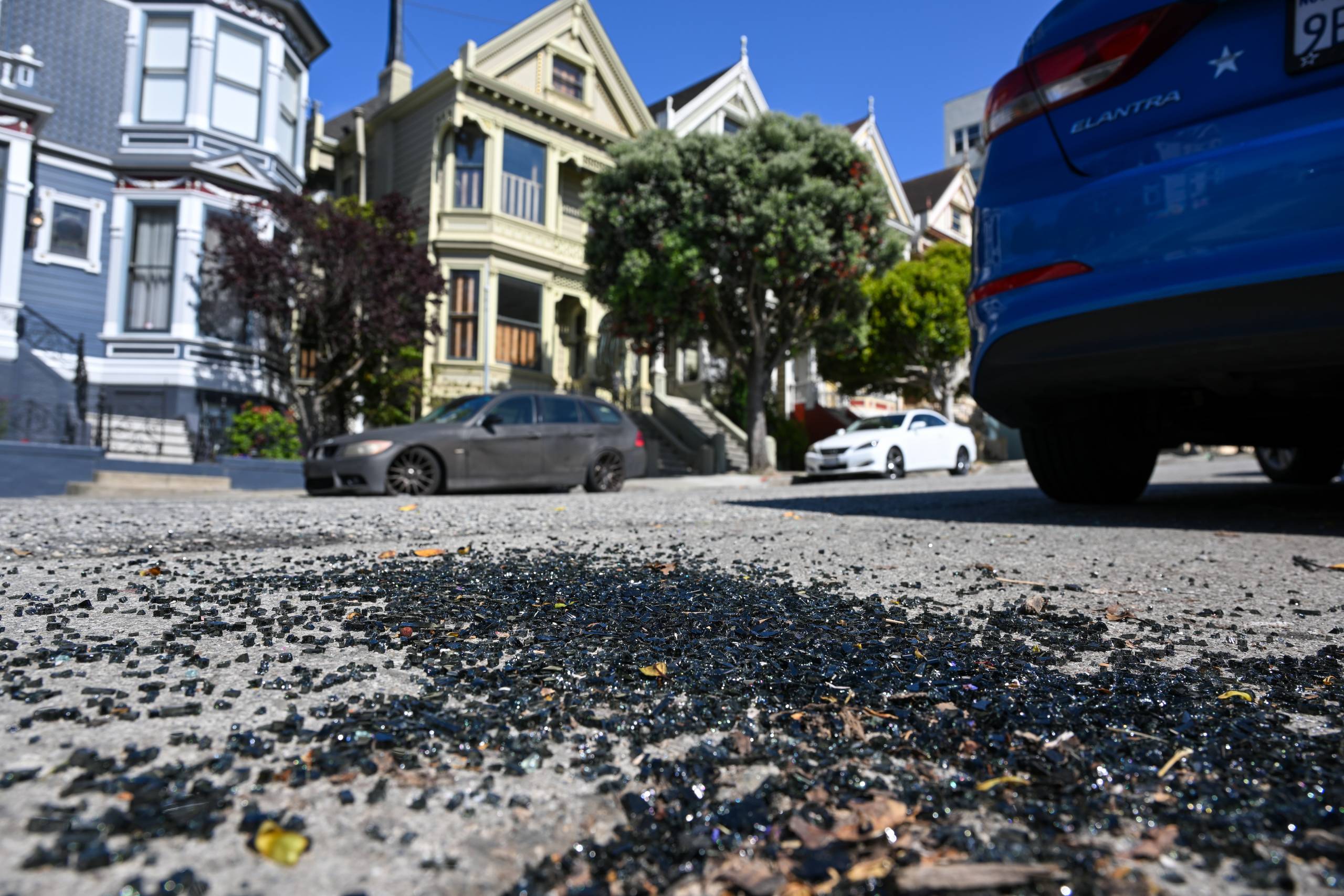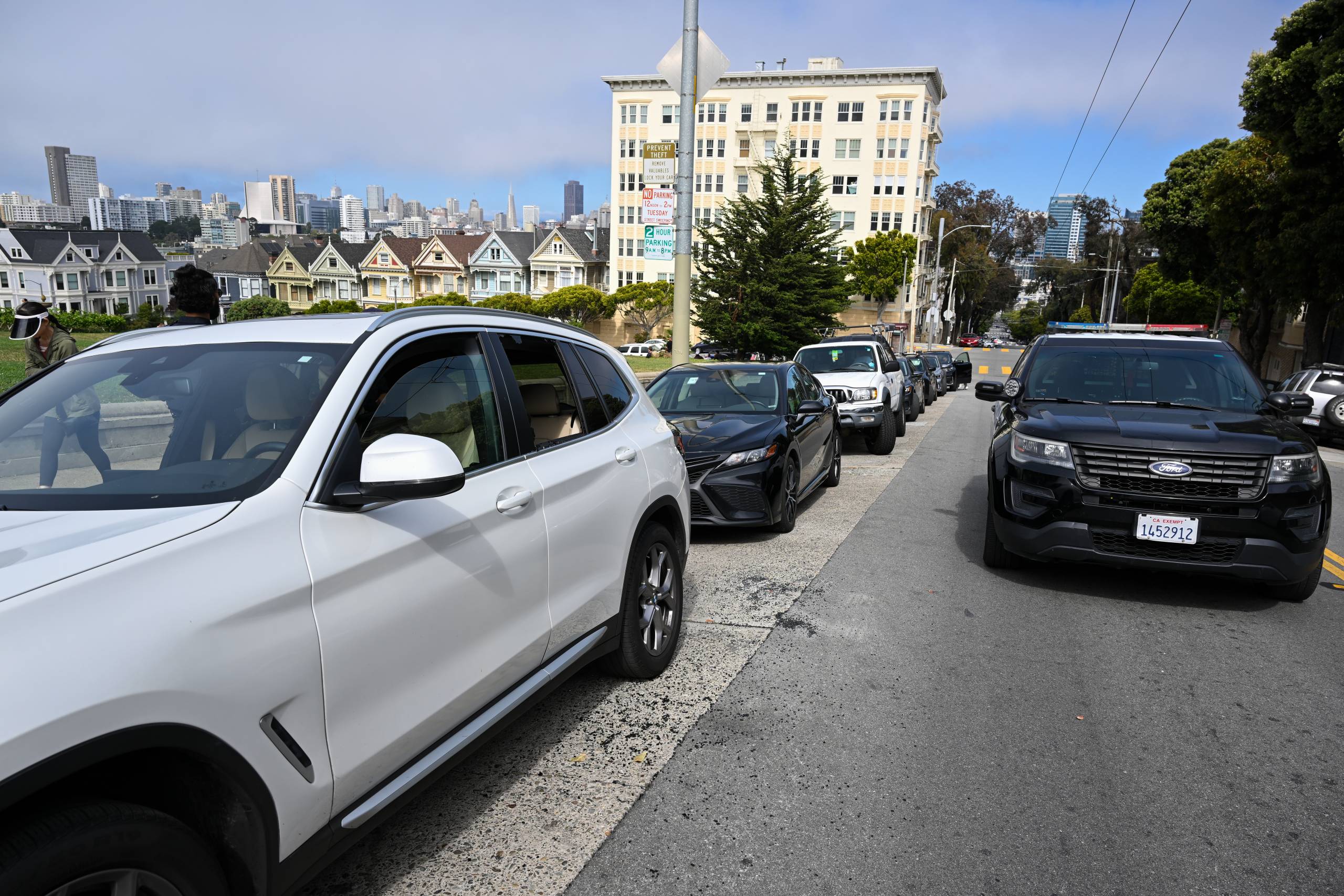[ad_1]
If you’ve lived in the San Francisco Bay Area for any period of time, and you’ve never had your car broken into, you can count yourself among the lucky few.
At this point, having your car windows smashed by thieves looking for items to steal feels like a queasy rite of passage for residents. You might have also heard it unofficially called “bipping.”
“I would say somewhere between 50% to 25% of our volume is auto break-ins,” says Ladan Sobhani, the co-owner of Berkeley repair shop Auto Glass Express. In her experience, “it’s not ‘if’, it’s ‘when’ you’ll get your car broken into if you live in the Bay Area.”
And what if you don’t lose any personal belongings? A car break-in will still leave you stuck with broken windows, which could end up being quite expensive depending on your insurance and the level of your deductible.
We spoke to auto repair professional Sobhani as well as Janet Ruiz, Director of Strategic Communications at the Insurance Information Institute, about what you need to know about having your car broken into in the Bay Area. So keep reading for advice on:
And if you’re looking for strategies to potentially reduce your chances of getting bipped again, we’ll soon be publishing a guide on that as well. Sign up for our News Daily email to make sure you see it.
What to do immediately after a car break-in
At the scene: Take photos of the damage.
You may feel angry or frustrated when you come back to your car and see it’s been broken into. Even if you discover nothing was taken from your car, this experience can feel extremely violating — whether it’s your first or your third break-in.
As much as you’re able, put aside your emotions temporarily, swing into action and start taking photos of your car with your cell phone. Taking photos of your car, says Ruiz from the Insurance Information Institute, is “the first thing you should do whenever you have a loss,” for insurance purposes.
Take as many clear photos of the damage as you can, including from outside the car and inside it too. If it’s dark, make sure to turn on your camera phone’s flash. If your hands are shaking — break-ins can be jarring, especially if it’s your first time — take a pause to calm yourself or ask someone else to take photos for you. You don’t want blurry, unclear photos for your insurance claim.
Tempered glass used in car windows usually shatters in a way that doesn’t create jagged, sharp pieces, so your risks of getting cut are low.
After you’ve taken photos, don’t stress too much about sweeping up all the broken glass from your back seat, as a glass repair shop will almost certainly be able to vacuum this glass up for you. Of course, if you need to transport passengers back home in your back seat — or have a car seat for a kid back there — you may want to do some brushing.
Whatever you do, just be careful when using any automatic or manual window controls after a break-in. You can accidentally dislodge and spread around even more broken glass doing this.

At the scene: Has your stuff been dumped nearby?
If your bags were snatched from your back seat or trunk, there’s a chance that the thieves may have rifled through them and then dumped anything they didn’t deem of value.
If you feel safe doing so, take a look on the street near your car and on streets nearby — particularly paying attention around bushes, hedges, trash cans and dumpsters — to see if any of your bags or items have been tossed there. It’s not guaranteed, but it’s worth a shot.
Some people in the Bay Area make it their mission to unofficially reunite owners with their stolen items when they find them on the street, like Andrea Carla Michaels of LostandFoundSanFrancisco.com. You could also check sites like Nextdoor.com, local Facebook groups and subreddits like r/sanfrancisco, r/oakland and r/bayarea to see if anyone has found your stuff and wants to help you reunite with it.
At the scene or after: File a police report.
If the thieves are long gone, and you aren’t injured, should you still file a police report? Yes.
For one thing, your insurer may require you to have a police report on hand in order to process your claim. Bay Area officials are also encouraging residents to report these crimes. Doing so gives authorities “an idea of where to put our resources,” said San Francisco Police Department Chief Bill Scott at a press conference held on Aug. 24. “We can’t solve problems that we don’t know about.”
You can usually file a police report one of several ways:
- Call the police non-emergency line (do not call 911 to file a police report).
- File a police report online — and make sure you save a copy for your records.
- Call 3-1-1.
Remember: If you live in a different city, you should report the crime to the police department in the city in which the break-in occurred, not the one you live in.
You can also go in-person to a police station to file a report. In San Francisco, you can also ask station officers to check your vehicle for fingerprints. “Please have your car fingerprinted. Sometimes we get evidence,” said SFPD Chief Scott. “It’s hard, but sometimes we do.”

After: Think if any stolen items could compromise your personal safety or identity.
If documents containing any personal details were stolen, you could be at a higher risk for identity theft. The California Attorney General’s website has details on how to monitor your credit for free.
If any credit or debit cards were among items stolen from your car, contact your bank immediately to have them canceled. You may also be prompted to list this theft on your police report.
If your house keys, entry keycards or garage opener to your building were stolen in a car break-in, you might strongly consider having the locks changed or those keycards wiped. This is especially important if thieves also took anything that would let them know your address, such as your insurance cards or vehicle registration.
After: If you had items stolen, start tracking down proof you owned them.
Insurance companies usually won’t just take your word on which items were stolen from your car. You’ll need to prove you actually bought them, with something like a receipt.
Unless you’re incredibly organized, you might not have a drawer back at home full of receipts for every item of value you’ve ever purchased in your life. The Insurance Information Institute’s Ruiz recommends that you look through your checking account or your credit card statements, which will provide a record of the purchase. You can then take a screenshot of the transaction.
One tip for the future, says Ruiz, is to make time to do what she calls a “home inventory”: Walk around your home one day and snap photos or videos of everything you own. “Open doors, open closets — go in your garage,” she recommends and particularly focus on getting photos of all your electronics. If you have expensive stereo equipment fitted in your car, you should photograph that too. These photos will act as a timestamped record you actually owned these items.
After: Driving your car with a broken window until you get repairs.
Driving with a broken car window only becomes illegal, according to Section 26710 of California’s Vehicle Code, “when the windshield or rear window is in such a defective condition as to impair the driver’s vision either to the front or rear.” Thieves are usually likely to break your back side windows for their convenience and speed.
[ad_2]
Source link